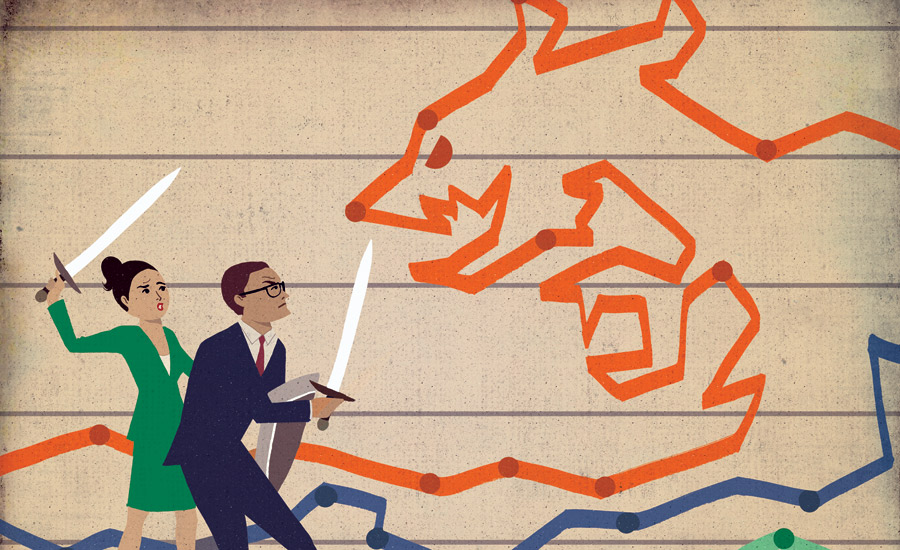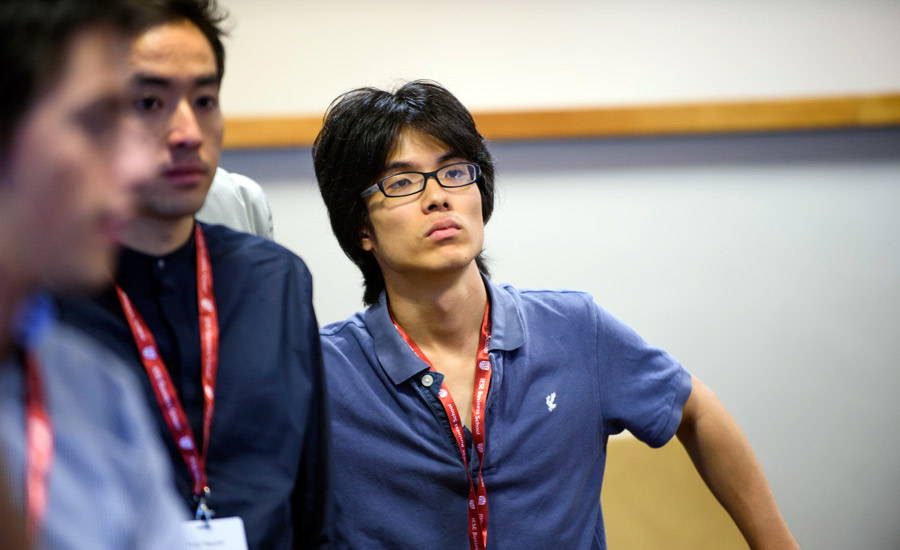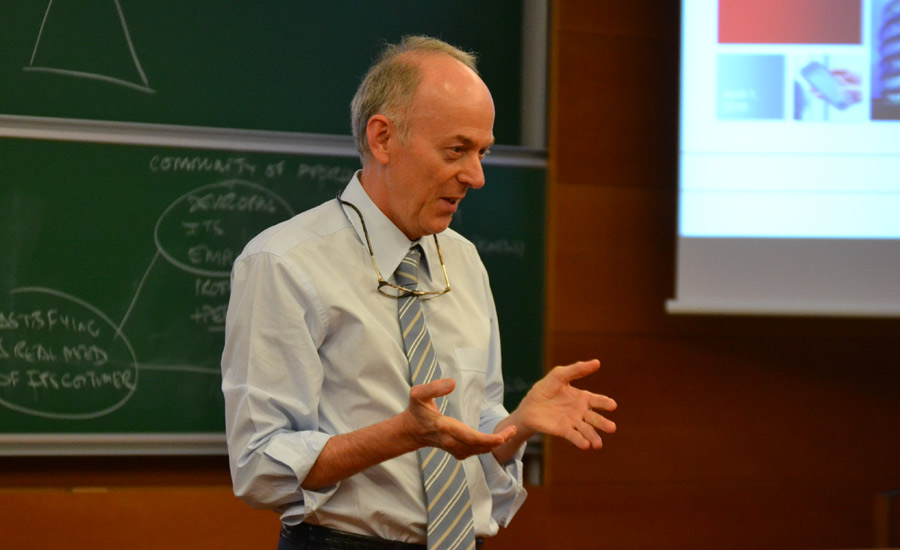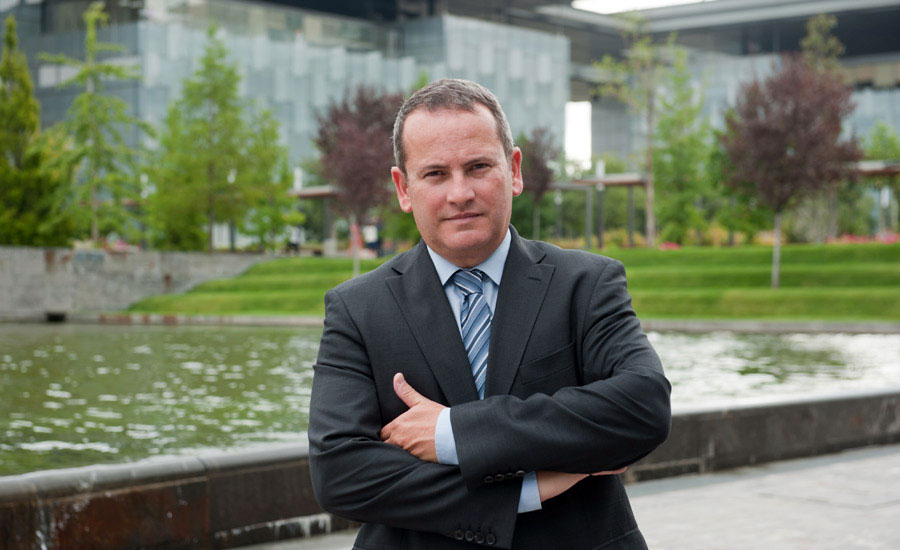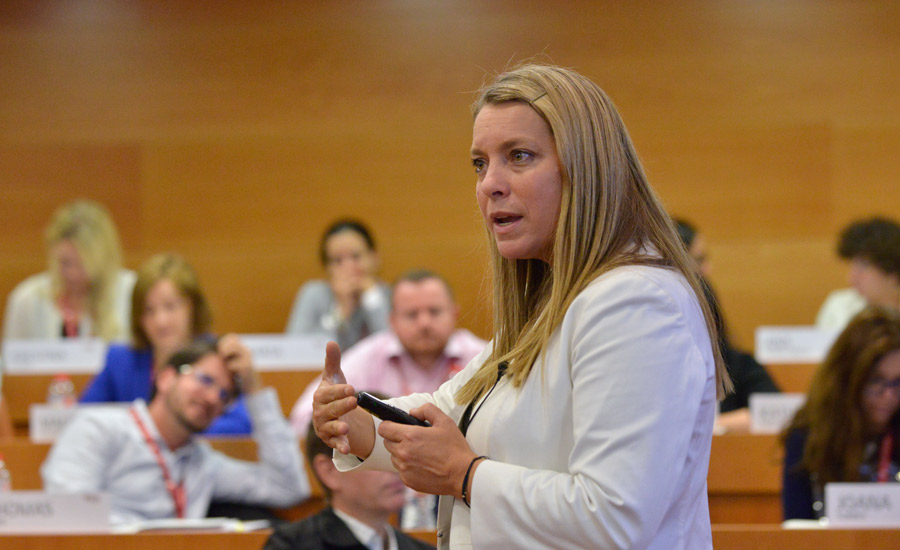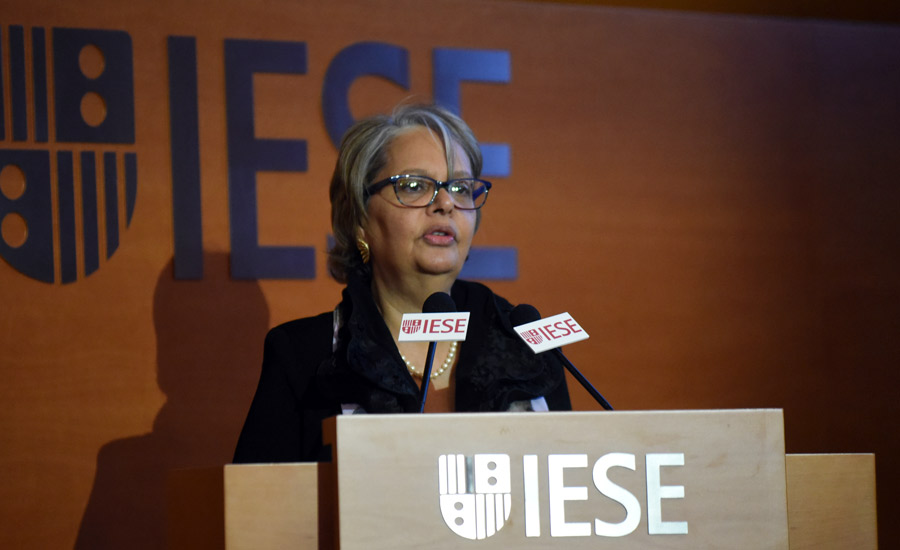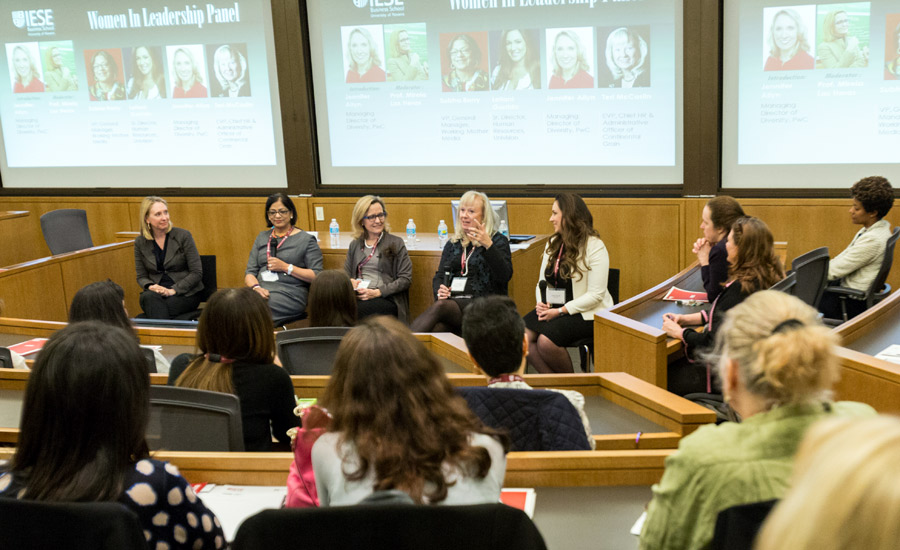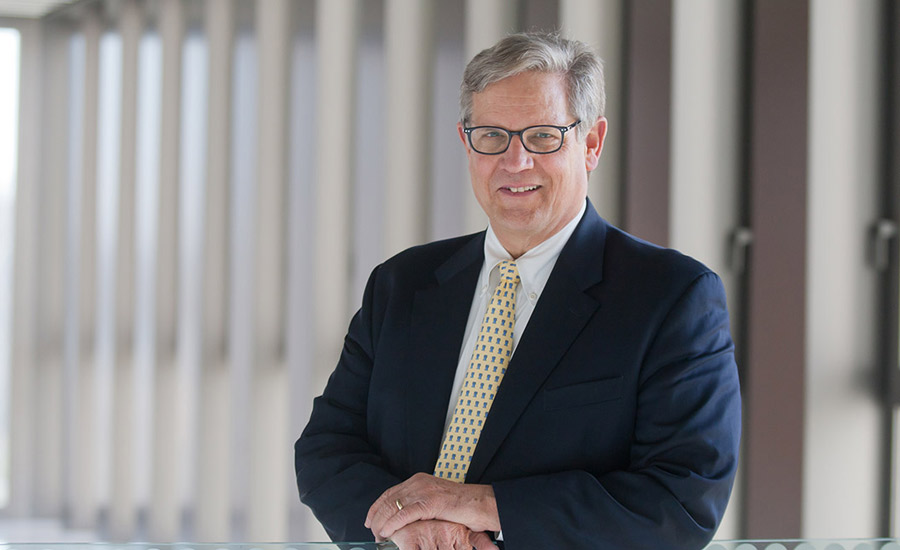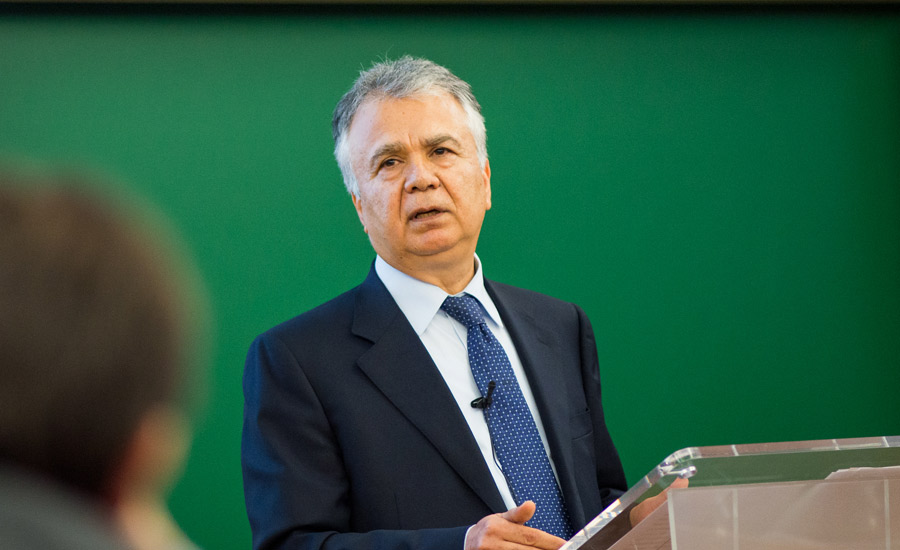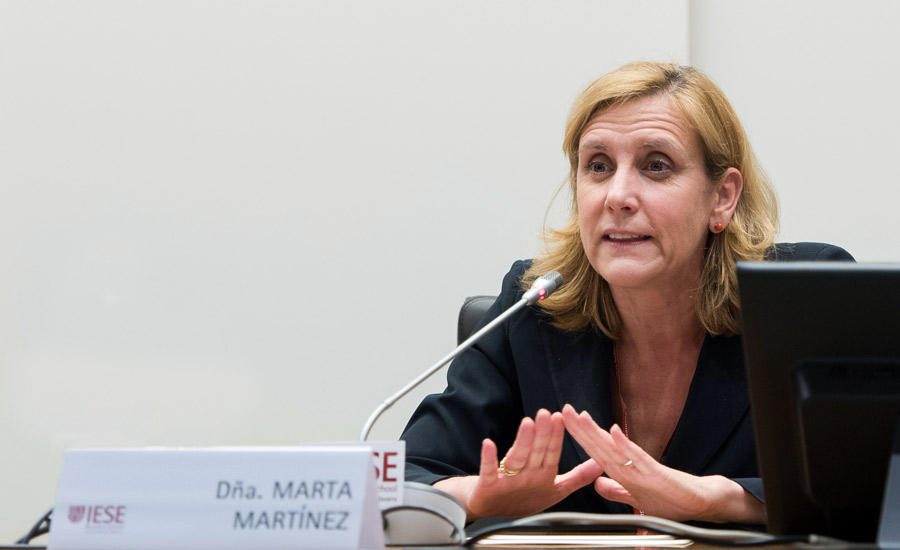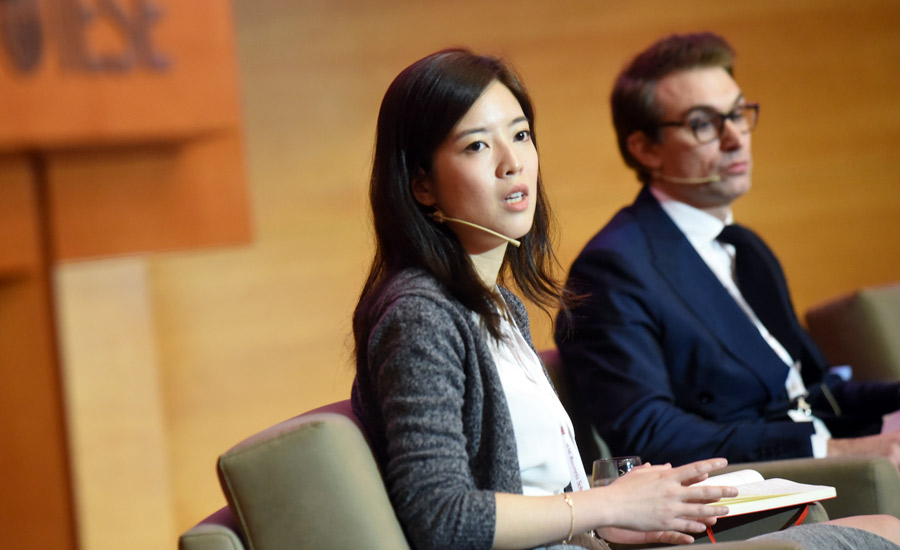
“It’s not about market dynamics,” said Kelly Hu, an associate at China-focused private equity firm Lunar Capital, “It’s about finding the right brands and the right products for the right market segment.”
Hu was speaking at the 16th Fashion & Luxury Goods Industry Meeting, celebrated at IESE’s Barcelona campus this month. The meeting was held in collaboration with ISEM Fashion Business School, and directed by Prof. Fabrizio Ferraro. Founding President of the Industry Meeting, Prof.Pedro Nueno, chaired a panel discussion. On a panel convened to share insights into changing industry trends in Asia as Chinese GDP growth slows were Raul Verdicchi, CFO Japan and South Korea for Ermenegildo Zegna, and Prof. Núria Mas.
Consumer tailwinds, said Hu, are stronger than sentiment suggests.
GDP growth is slowing but remains high at 6.5 percent. China is already the third largest global luxury market after the U.S. and Japan and several large fashion brands are flourishing there.
She listed examples including Moncler Asia with 42 percent growth in 2015 and Valentino China with 30 percent mainland China growth in the first six months of 2015. She also highlighted the case of I Pinco Pallino, the Italian designer children’s fashion brand. Following Lunar’s purchase of a controlling stake in it in 2014, she said, its sales in China increased by 250 percent in 2015.
This is an example of precision-targeting growing market segments, said Hu. Changing demographics are creating a bright future for children’s fashion since the Chinese government announced in 2015 that it was ending the country’s one-child policy. This would lead to 6 million more babies per year and an upturn for related sectors, she added.
Is China on Course for a Hard Landing?
Other factors in the Chinese economic outlook were addressed by Prof. Mas. Rising U.S. interest rates would hurt competitiveness in Hong Kong, due to China’s currency peg to the dollar, but she remained optimistic about the future.
“There’s going to be a soft slowdown, not a hard landing,” she said. The country still had “muscle” thanks to its sound fiscal debt position. China has used its reserves to control the exchange rate but still held reserves worth 35 percent of GDP. This, combined with its strong NIIP (Net International Investment position – the difference between its external financial assets and its liabilities) and current account surplus – gave it “room to maneuver” as it sought to create a new growth model.
Mas also pointed to changing demographic trends and noted the rising number of highly qualified graduates. She highlighted massive projected increase in middle-class families, which would create opportunities for companies.
Japan and South Korea: Looking Inward for Growth
Meanwhile, Japan is also undergoing major changes in its luxury goods market, which is worth 8 percent of the global total, said Raul Verdicchi. Growth has recently leapt to double digits. But what is driving it?
According to Verdicchi, Chinese shoppers visiting Japan are responsible for the surge, which started slowly in 2012 as a result of “Abenomics,” the economic policies of Prime Minister Shinzō Abe.
“80 percent of the market is Japanese shoppers. But it used to be 90 percent. Chinese visitors to Japan increased 80 percent last year,” he said. To adapt to this, distribution changes were needed including Chinese-speaking staff in stores in Tokyo. This Chinese-led growth, however, was not sustainable and companies must look closer to home.
Young Japanese shoppers are not conformists like previous generations, said Verdicchi. They are “sophisticated consumers” and want to define themselves through fashion choices. “The mission is to create, engage and retain Japanese domestic customers,” he added.
A similar challenge could be found in South Korea. Its luxury market, 4 percent of the global total, had been damaged by foreign shoppers staying away as a result of currency exchange fluctuations and MERS virus outbreaks.
“Chinese customers are returning,” he said. “But brands need to engage with domestic customer generation and retention.”

